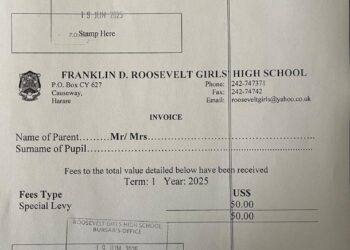I was unfamiliar with the Men’s Underwear Index – the MUI – until I heard it discussed this week on National Public Radio. Perhaps on the Marketplace Morning Report on WAMC. Or some similarly unassailable repository of economic news and analysis. The theory – I believe it was first proposed by former Federal Reserve chair Alan Greenspan – is that you can gauge consumer confidence by how robust men’s underwear sales are.
Greenspan’s thinking was that men buy underwear when times are good but defer purchases when they’re feeling less certain about the economy. Since nobody sees your underwear, except perhaps your significant other, when you’re struggling financially you may delay refreshing your underwear unless it’s so structurally unsound that you have little choice but to invest in new boxers or briefs.
According to the most recent MUI, men’s underwear sales rose 5.5% from December to January, suggesting that men are feeling reasonably optimistic about where the economy is heading and flush enough to buy new undies. Either that or their partners are so appalled by their appearance that they put their foot down. I wonder whether Greenspan controlled for interpersonal relationships and the embarrassment factor in his analysis. Somehow I doubt it.
When I discovered the MUI it also forced me to do some soul searching. What does my underwear drawer say about me? Certainly nothing that would suggest the economy is coming in for a soft landing. My Fruit of the Looms indicate that we’re in for a sustained recession. Then again, I don’t consider myself the average consumer. I’ve always thought that if the federal government was counting on my purchasing power it would long ago have gone under.
To be sure, I was contemplating the state of my underwear even before the latest numbers came out. I’ve got some newer stuff. But I’ve got some ancient specimens that I’ve been loath to discard, even though they’re showing their age.
That’s the problem, or conversely the pleasure of underwear: it comes without an expiration date. Only you can decide when it’s had enough. By the way, for the sake of full disclosure I’m referring to briefs, not boxers. That’s what my mother bought me as a child and I never switched, so I can’t speak to boxers’ life span. As a brief aside, no pun intended, I frankly don’t understand why anybody would wear boxers. Isn’t it ultimately about support? I appreciate there’s an argument to be made for breathability. But the last time I checked most people breathed through their noses.
I also can’t speak with authority about women’s underwear and why Greenspan’s analysis doesn’t include the other fifty percent of the population. I’m loath to ask my wife about her underwear buying habits. She’d want to know why. I’d have to explain that it was for a column. And she’d roll her eyes and ask me whether I couldn’t find anything better to write about? My feeling is that if it’s good enough for NPR it’s good enough for me.
How old are my briefs? It’s not like I keep records. But one way to tell – apart from whether they’re coming apart at the seams from decades of washing and drying cycles — is by their labels. I don’t know whether you’ve noticed. But about a decade ago, if not longer, underwear manufacturers switched from sewn or perhaps glued labels to those printed directly onto the garment. Which I suppose means it’s inaccurate to describe them as labels anymore since, strictly speaking, they’re not separate pieces of fabric.
I first noticed the switch when I had trouble occasionally orienting my underpants. With a label it was always possible to tell back from front. But those printed onto the garment fade over time, leaving you guessing. By that age-dating method I still have a few pair of Hanes whose old-fashioned labels suggest they date back to the Bush administration – does it matter which one? — though certainly not as far back as the Reagan years.
Printed rather than sewn labels probably reduce the manufacturer’s cost, though I’ve always been impressed by how cheap underwear is. Then again, as you’ve probably already deduced, it’s been a while since I visited my local Wal-Mart’s men’s underwear aisle. Inflation had undoubtedly taken its toll, as it has with everything else. Which is one more reason to delay new purchases, no matter what the Men’s Underwear Index says about the economic outlook.
I’ve heard good things about Tommy John underwear but that’s well beyond my price range. For me it’s less about quality than quantity. If I can open my underwear drawer and spot a dozen dazzling freshly laundered pair – so what if they’re frayed — it’s one less thing to worry about in a world filled with anxiety. I’m not sure how you measure that modest feeling of well-being, or assign a price to it. But I’d like to suggest it’s priceless.
Ralph Gardner, Jr. is a journalist who divides his time between New York City and Columbia County. More of his work can be found be found on Substack.
Source Byo24news










